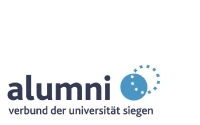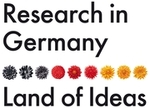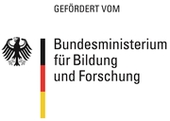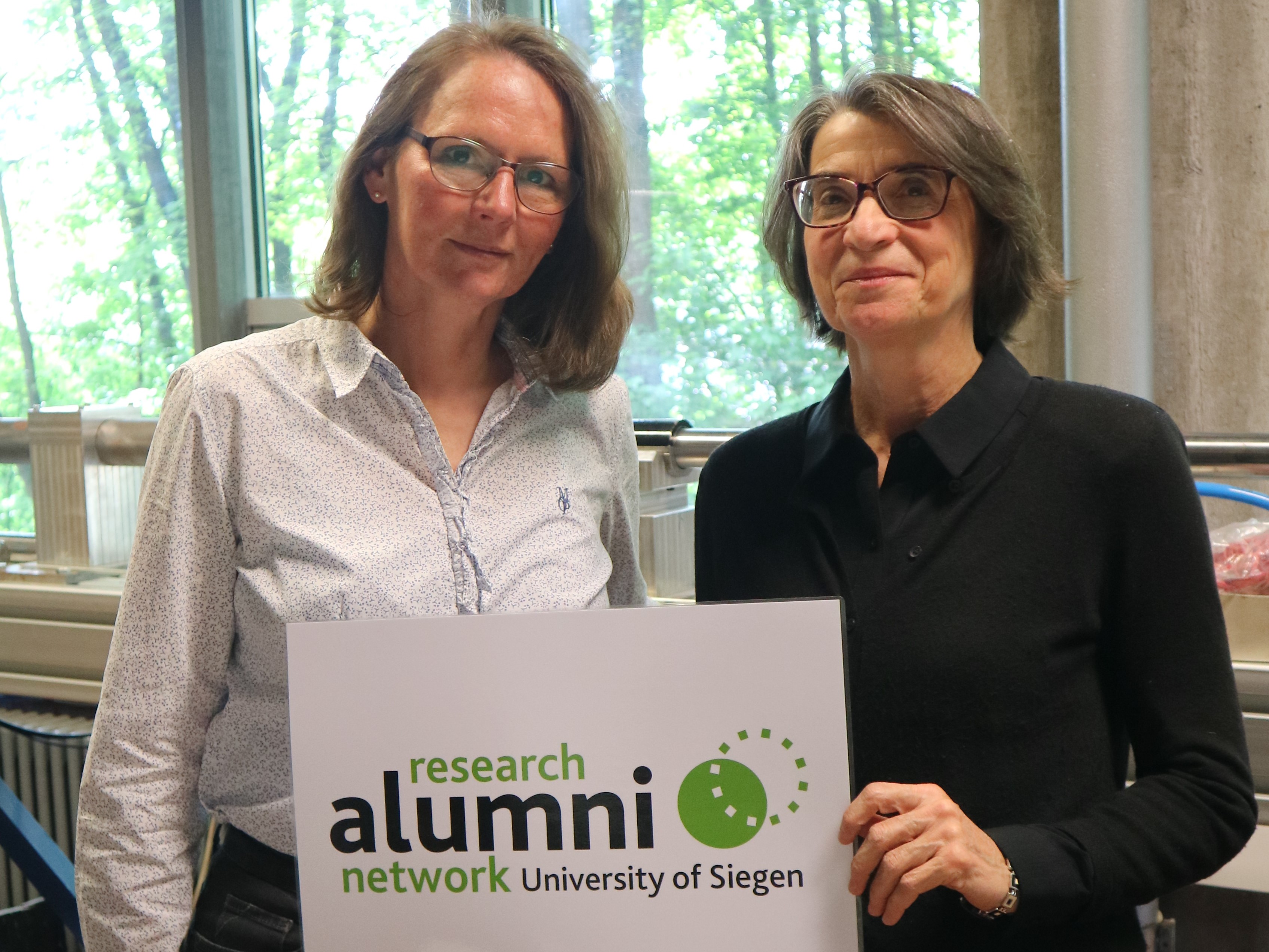- Alexander von Humbold-Stiftung prämiert Konzept zur Vernetzung der Forscher-Alumni
- Forscher-Alumni im "Querschnitt 5/2016"
- Forscher-Alumni im "Querschnitt 4/2017"
- Forscher-Alumni im "Querschnitt 1/2018"
- Forscher-Alumni im "Querschnitt 2/2018"
- Forscher-Alumni im "Querschnitt 3/2018"
- Forscher-Alumni im "Querschnitt 1/2019"
- Forscher-Alumni im "Querschnitt 2/2019"
- Forscher-Alumni im "Querschnitt 3/2019"
- Forscher-Alumni im "Querschnitt 1/2020"
- Forscher-Alumni im "Querschnitt 2/2020"
Prof. Dr. Anna Pandolfi - Prof. Dr.-Ing. Kerstin Weinberg
A strong cooperation on fragile matters
Prof. Dr. Anna Pandolfi and Prof. Dr.-Ing. Kerstin Weinberg are currently investigating a special type of concrete. Concrete is a construction material particularly apt to sustain compressive loads, but this material performs less well when exposed to impact or long-term vibrations that induce a tensile state. Tensions are dangerous because they may cause cracks, which shorten the life of the material. Likewise, repetitive vibrations may reduce the mechanical properties of the material. The scientists and their team have been trying to develop a material that consists of concrete with inclusions that can absorb some of the mechanical energy. In this way, part of the vibration energy can be subtracted from the concrete which is then no longer so strongly exposed to this energy. This material could then be used, for example, under the rails of trains or under rotating machines in oil drilling
In the recent past, failure of concrete has been explored with various calculation methods and with experiments conducted at the Politecnico di Milano and the University of Siegen. For example, the fracture pattern of about 160 plates stricken by a sphere was analysed experimentally and numerically. Spheres of different weights produced the most diverse patterns. The experimental findings have been investigated and compared to the results of numerical simulations trying to mimic the plate failure. A major challenge is that the numerical results look very symmetrical and unnatural."A break is never perfect or symmetrical. Everyone knows the aspect of a crack pattern when a soccer ball breaks a windowpane of glass. Many crack patterns look similar to a spider's web. To represent and understand this fracture behavior is really not easy, there are many mathematical challenges", Prof. Weinberg explains.
Prof. Pandolfi adds that a fracture should be understood as the modification of the boundaries of the body. When an intact body is exposed to a fracture, new boundaries create inside the body. This leads to many computational problems. For example, the shape of the body changes and the mechanical response needs to be modelled in different way. It is also important that the fracture modelled corresponds to the one that occurs in reality. Simulations must provide a specific crack pattern, not a generic crack pattern. Therefore, one has to account for the physical rules of reality, for which the final state of a fractured body is characterized by a minimum energy.
In taking these challenging steps in their research, the two scientists can count on a strong scientific partnership that has proven its worth many times in the past. Prof. Pandolfi is a civil engineer with interests in computational mechanics and biomechanics of soft tissues, Prof. Weinberg is a mechanical engineer focused on solid mechanics. Both bring different skills to the team that complement perfectly. The strong foundation for their collaboration was formed back in 2001, when the two scientists were working on different topics at Caltech in California, sharing the same office. They quickly realised that they had many common professional interests, and so the ongoing German-Italian collaboration started.
But even in the present, their research benefits from the collaboration. For example, they profit from the Politecnico di Milano's access to a large number of online papers to which the University of Siegen does not have access. Prof. Pandolfi, also emphasizes that the cooperation also opens many doors for her and her team: "In Italy, we don't get any money for our research. Our research is dependent on money from the industry. This complicates many things. For example, we can't build machines so easily in Italy.” At the University of Siegen, they have machines that can be used for experiments. In general, there is a lot of support. If you want to use the laboratory in Italy, a lot of bureaucracy is necessary, which is not the case in Germany. The importance of being able to work together in the lab became clear once again at the time of the Corona pandemic. While coding can also be done on online, it is beneficial to work together in the lab. It is much faster and more accurate to respond to the findings of others and ideas that arise on site can be incorporated more quickly in reality. Also a visit to Siegen, which was already supposed to be funded by the research alumni program (return for research grant) with financial support of the alumni association "AMS-Alumni Maschinenbau Siegen" in 2020, had to be postponed due to the pandemic. Fortunately, this stay could now be realised and was supported by these provided funds.
As they move forward, they again have some joint experiments coming up in the lab on the new concrete. In the future experiments, stronger samples of concrete will be considered. This has the following reason as Prof. Pandolfi explains: "If the material is too weak, it is difficult to measure the fracture properties. We need something that can withstand the impact so that we can better evaluate the force acting on the sample. If the object is too weak, it will break under a very small load." Subsequently, they also will model the fracture in the new concrete with numerical codes. The physical problem could be simulated with different mathematical methods. It is necessary to see which mathematical approach is the best and also the fastest, because the computational time is very important. It does not make sense to wait days for the results of a simulation when fracture only lasts a fraction of a second in reality. In this specific case, numerical calculations will address the question of how the new material will behave compared to the classic concrete. How much less resistant will the new material be?
But this cooperation has also made further progress across projects. For example, Prof. Pandolfi was looking for a way to model the behavior of the cornea of the eye. Prof. Weinberg had already worked on a small structure made by assembled traingles. Coincidentally, this 3D model closely resembled the sustaining structure of the cornea. So this model could be used in the future to support research on the structure of the cornea. This could be helpful, for example, in avoiding injury to the cornea during surgical procedures. Prof. Pandolfi looks forward to further collaborations: “It is always very interesting when I come here and see what other things Prof. Weinberg is researching. New ideas are always forming, which may again be a starting idea for further collaboration."
This article is based on an interview conducted and authored by Antonia Blumberg.






